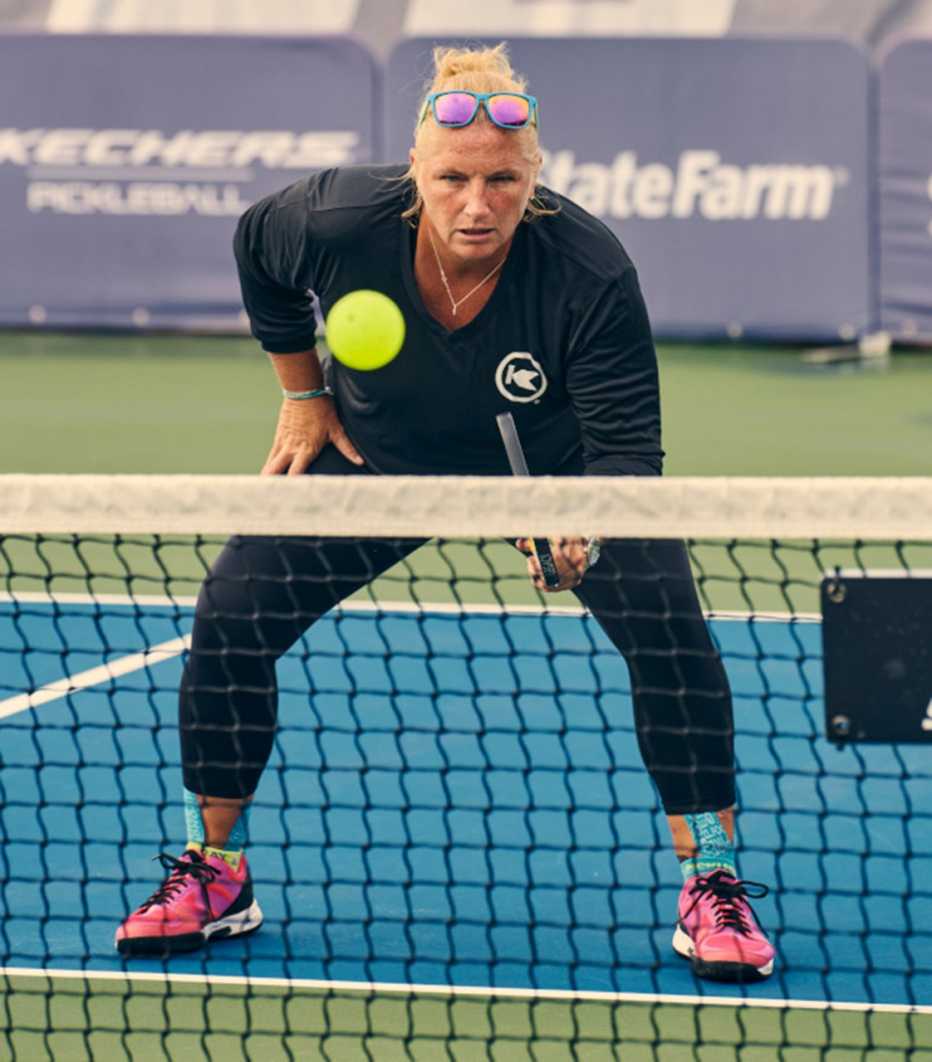AARP Hearing Center
As the thwack of the pickleball is the dink heard round the nation, more and more people are getting in on the fun. Pickleball, a mash-up of ping-pong, tennis and badminton, is the fastest-growing sport in the country, with 8.9 million players volleying and “dinking” at courts across the nation, according to the Sports & Fitness Industry Association. The association says participation in the sport increased by a whopping 159 percent over three years.
The sport’s name, legend has it, stems from either a cocker spaniel owned by one of the founders or the pickle boat of crew races. It’s played on a small court — one tennis court can be subdivided into four pickleball courts — with two teams of two.
Pickleball players, fondly referred to as picklers, have taken to the courts with a fierce zeal. The sport’s instantaneous appeal can be chalked up to its low barrier to entry. The time between learning the game and having a blast with it can be as brief as an hour. You can even play if you are in a wheelchair (with slightly different rules).
Strains and sprains rising
The benefits to pickleball are numerous, from exercise and mental acuity to social connection and purpose. In the shadows of its meteoric rise, however, lies a wake of pickleball-related injuries. Pickleball is categorized as a low-impact and mild-intensity sport, but pickleball injuries are growing.
AARP Sponsors Association of Pickleball Players Tour
AARP sponsors the Association of Pickleball Players (APP) Tour and is the title partner of the AARP Champions (50+) and Masters (60+) divisions. Pickleball has been the fastest-growing sport in the United States for the past three years because it is fun, active, social and accessible to everyone. The organization’s sponsorship includes free clinics at each tour stop for members to learn pickleball from APP pros, instructional videos about the sport and inspirational stories about how pickleball has transformed people’s lives.
One analysis published in 2021 in Injury Epidemiology estimated that there were nearly 29,000 pickleball injuries from 2010 to 2019. About 60 percent were strains, sprains and fractures, according to the study, and 85 percent of those visiting emergency rooms because of a pickleball injury were over age 60. Wrist and lower leg injuries were most common, the study found, followed by head, lower trunk, ankle, knee and shoulder. Injuries were mainly due to slips, trips, falls and dives.
Although injuries are becoming more commonplace, they are still a mere fraction relative to the legions of players who remain unscathed. “Pickleball overall is a very safe sport. Compared to other sports, the injury rate per minute is much lower,” says Bruce Moseley, an orthopedic surgeon at Baylor College of Medicine in Houston.
But as with any sport, the more people play, the more injuries will occur. Compared to tennis, says Moseley, “pickleball is more stepping and moving than jumping and running. This is great for your joints and muscles. People can tolerate it better.” The rackets are smaller, lighter and less cumbersome than tennis rackets, and the Wiffle-type ball made from plastic is easier to hit.
“By far the most effective way to protect against these injuries is to stretch and warm up beforehand,” Moseley says. Many of these injuries could be prevented by stretching the fronts and backs of the leg, the trunk and the lower back, he adds.
So there’s no need to retire your racket — just add a brief warm-up to your pickleball playbook, and chances are you will be all set.
Let’s Play Pickleball!
Become a part of the country’s fastest growing sport. Learn the rules, tips for playing and ways to win. Plus, how to warm up, what to wear and where to play.
Get the right safety gear
A study published October 16 in JAMA Ophthalmology found pickleball-related eye injuries have gone up by 405 cases a year between 2021 and 2024. In 2024 alone, more than 1,200 eye injuries related to pickleball were reported, and 70 percent of all eye injuries reported were in 50-plus players, the data show. Being hit with the ball caused 43 percent of eye injuries, falling down was the culprit in 28 percent of cases and taking a paddle to the eye was behind 12 percent of the eye injuries. Eye protection is key to thwart injuries from the sport, the authors wrote.







































































More From AARP
Find an AARP Pickleball Clinic Near You
The events are coming to cities nationwide
How Much Do You Know About Pickleball?
Test your pickleball knowledge with this fun quizPickleball Fun: Getting Started and Finding Tips
What to know before you play, plus guidance on finding lessons, courts and a community